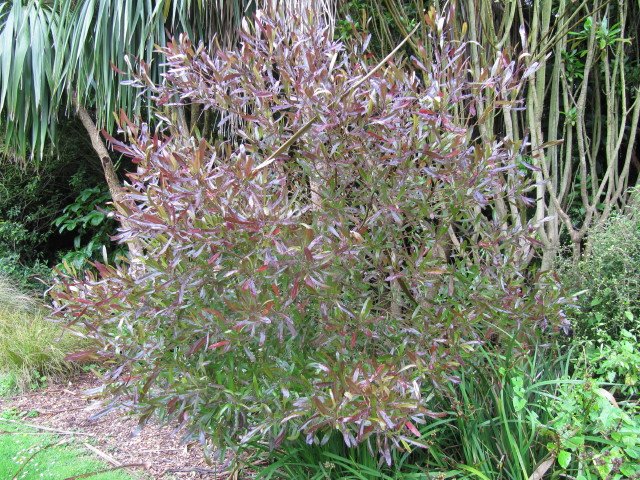Dodonaea viscosa
Desert Hop Bush
Family: Sapindaceae
Large, upright, evergreen shrub growing up to about 10 feet tall, usually about 6 feet wide or more. Small, yellowish-green flowers are followed by winged, green, papery fruits that resemble a hop. Those hops can turn a purplish color, especially in response to colder weather.
Full to part sun, moderate to low water when established, hardy to 15°F.
Larval food for the Cinta’s silkmoth (Rothschildia cincta) and Slug caterpillar moths (Limacodids).
This plant is used medicinally to treat inflammations, swellings, rheumatism, pain, and used as a ceremonial medicine. Active saponin compounds prevent this plant from use as an internal medicine—traditionally used externally.
Despite the name hop bush, this plant is not used in beer making—the saponins in the plant are about the worst thing one could put into beer, not only being poisonous, but also killing any sort of foamy head expected of a good beer. The name is attributed to the plant only because the fruits resemble hops.
The wood is very durable and is useful.
The generic name Dodonaea is named after the Flemish physician and botanist Rembert Dodoens (1517-1585), who was later a professor of medicine at Leiden, The Netherlands. The specific epithet viscosa is derived from viscous or sticky.
There are many, many species of Dodonoea and all but one species is found outside of Australia (our species) and that species is found all over the world on every continent except antarctica. Found on rocky or gravelly slopes, along arroyos, in canyons and often on limestone from 2,000-5,000 ft. This species grows all over the world in almost every continent, and oddly the only Dodonoea species not restricted to Australia.
Purple Hop Bush
While most plants are green, spontaneously some plants have a tendency to produce more anthocyanin in response to colder weather. The foliage of these sports turn a dark purple shade in the winter, and green up in the warm season. This selection is usually called ‘purpurea’ or purple hop bush and if often found in the trade.
Otherwise this horticultural selection has mostly the same attributes as the green hop bush, besides being slightly more ashy green than the brighter green of the regular species in summer.
Photo by Leonora (Ellie) Enking


